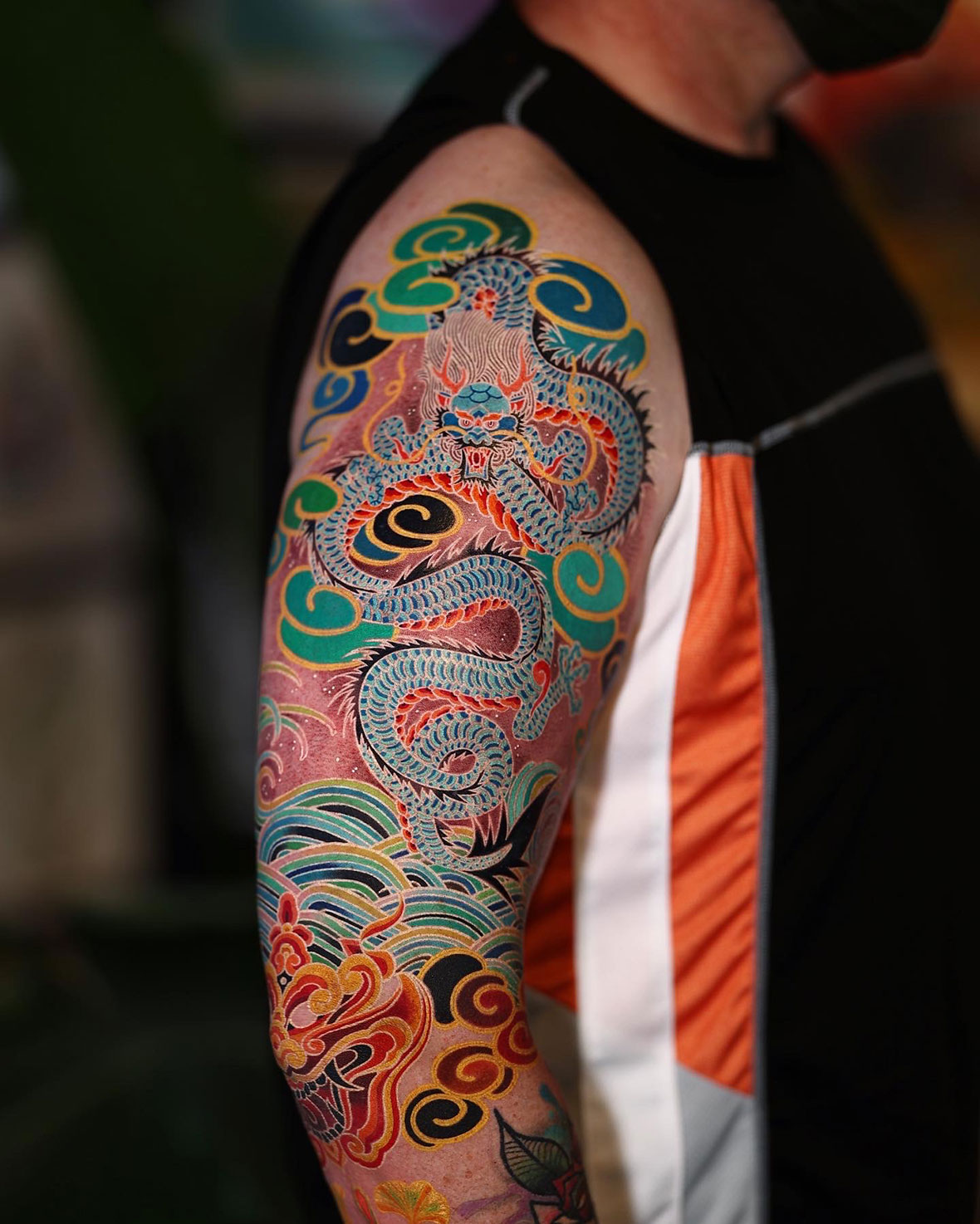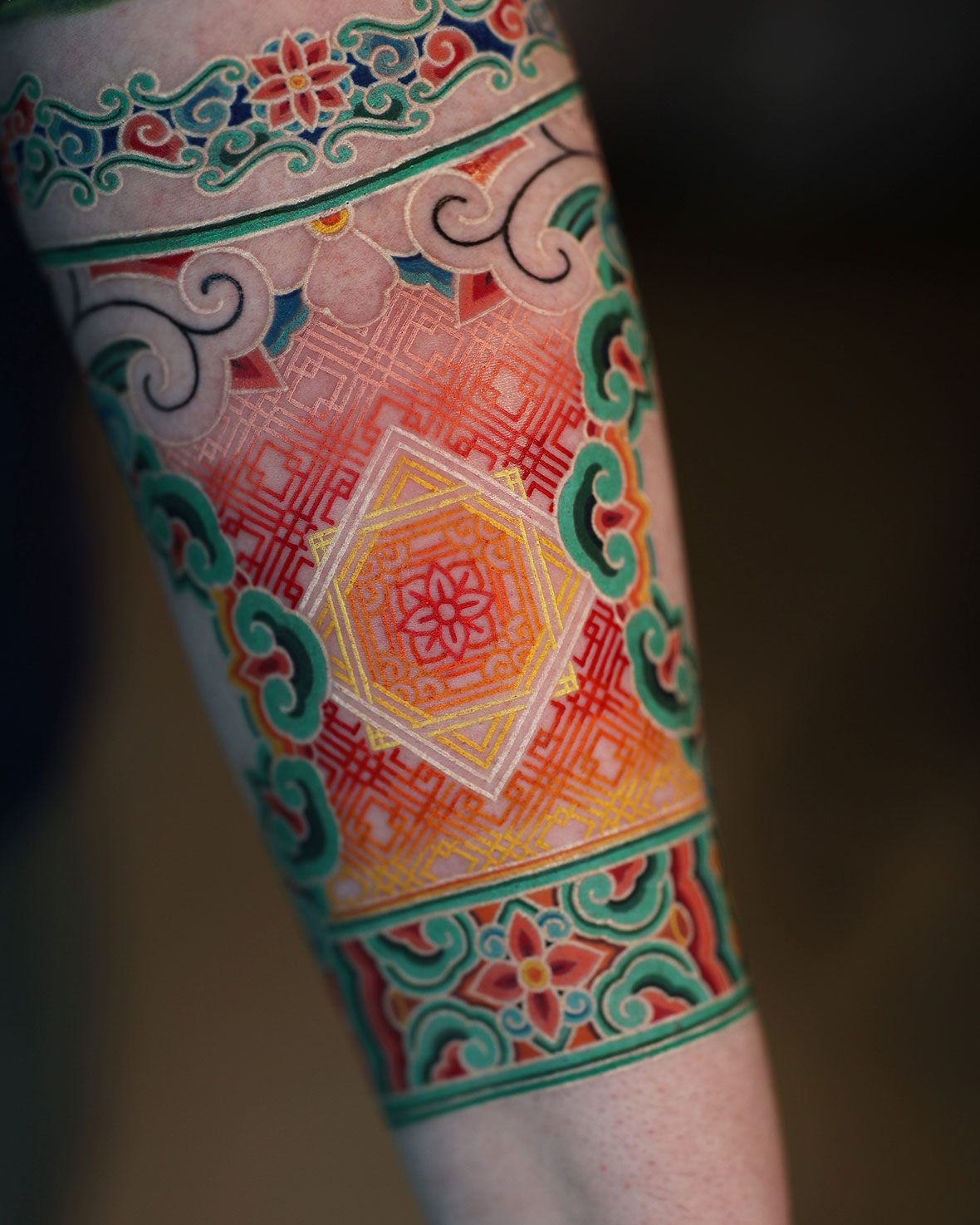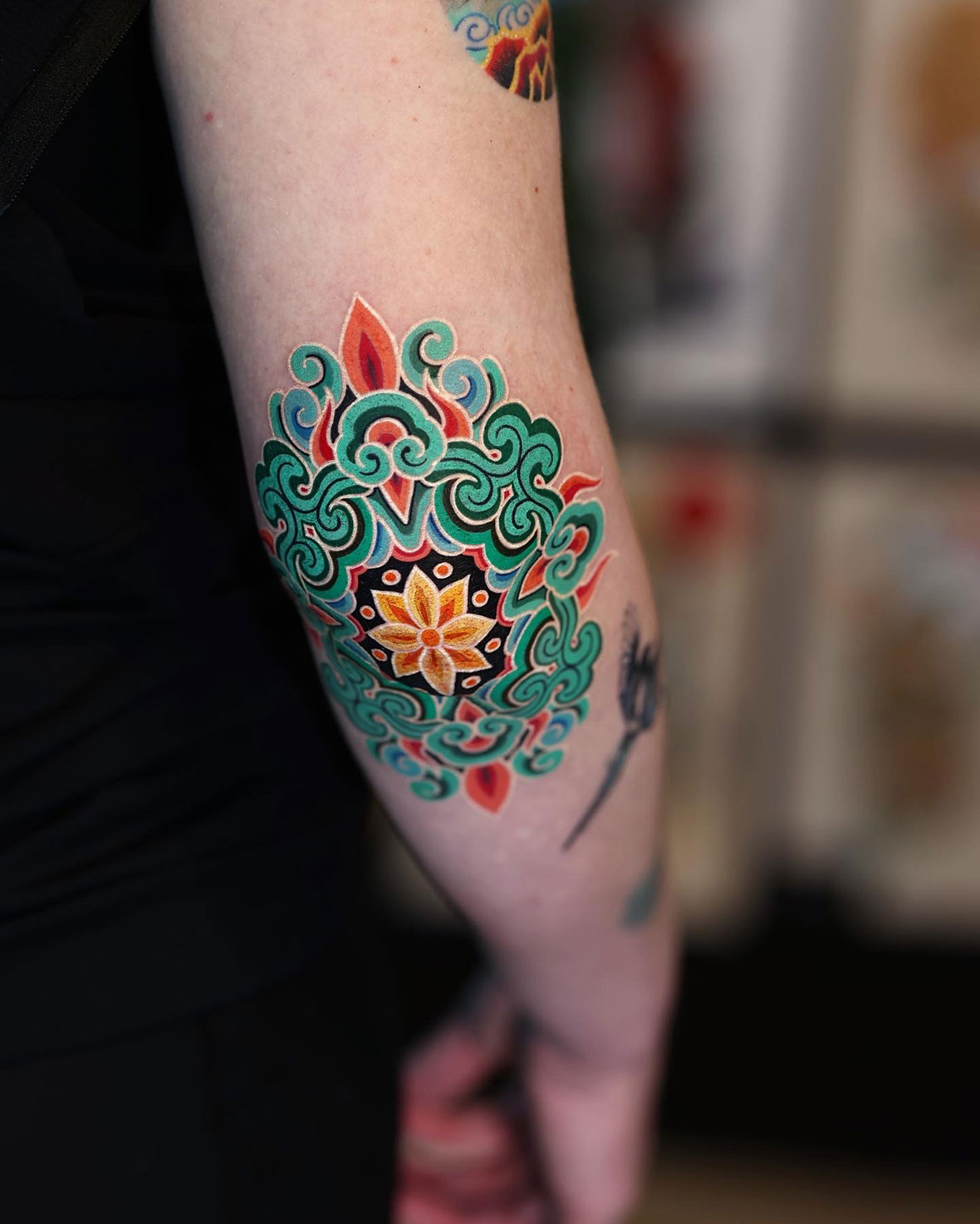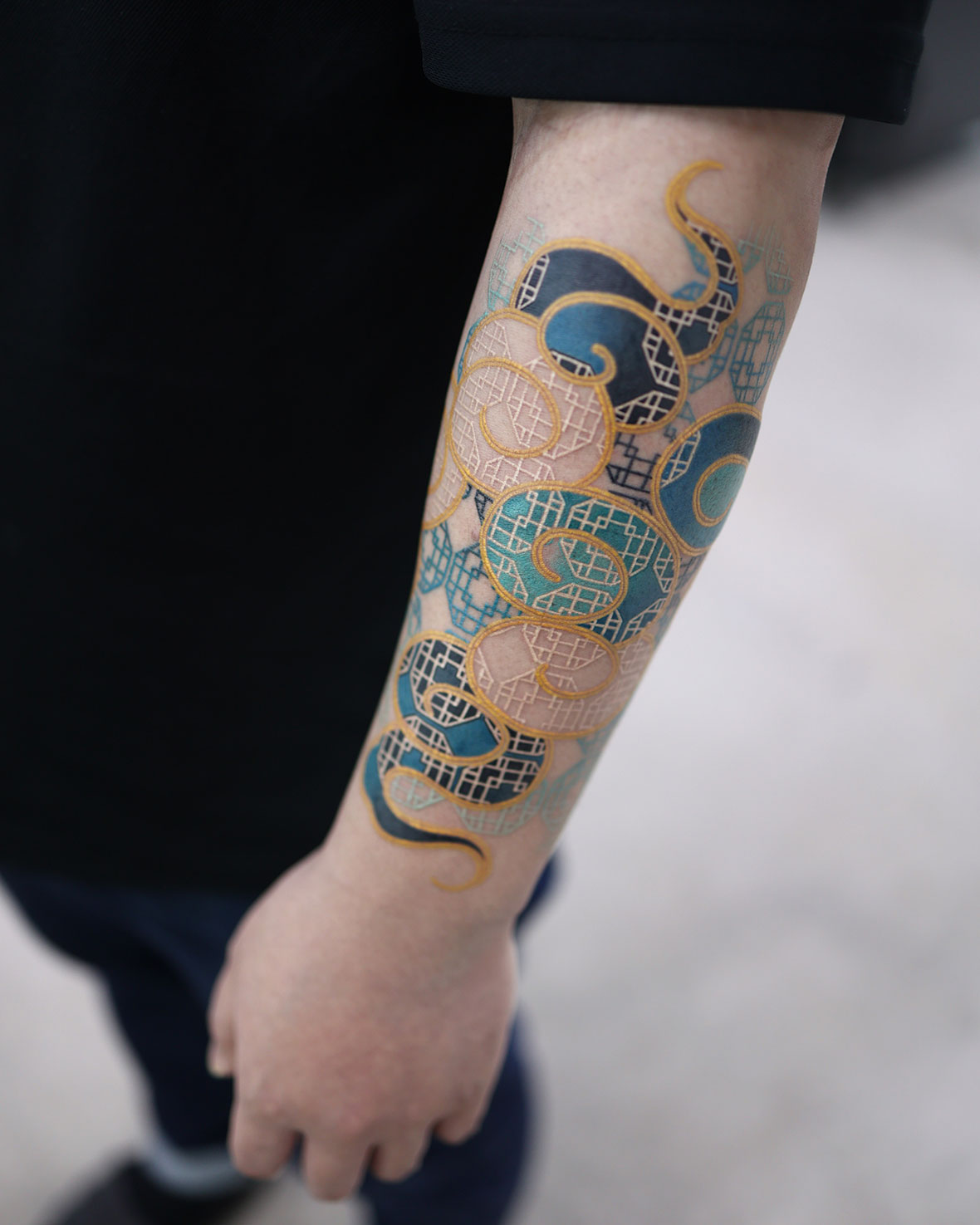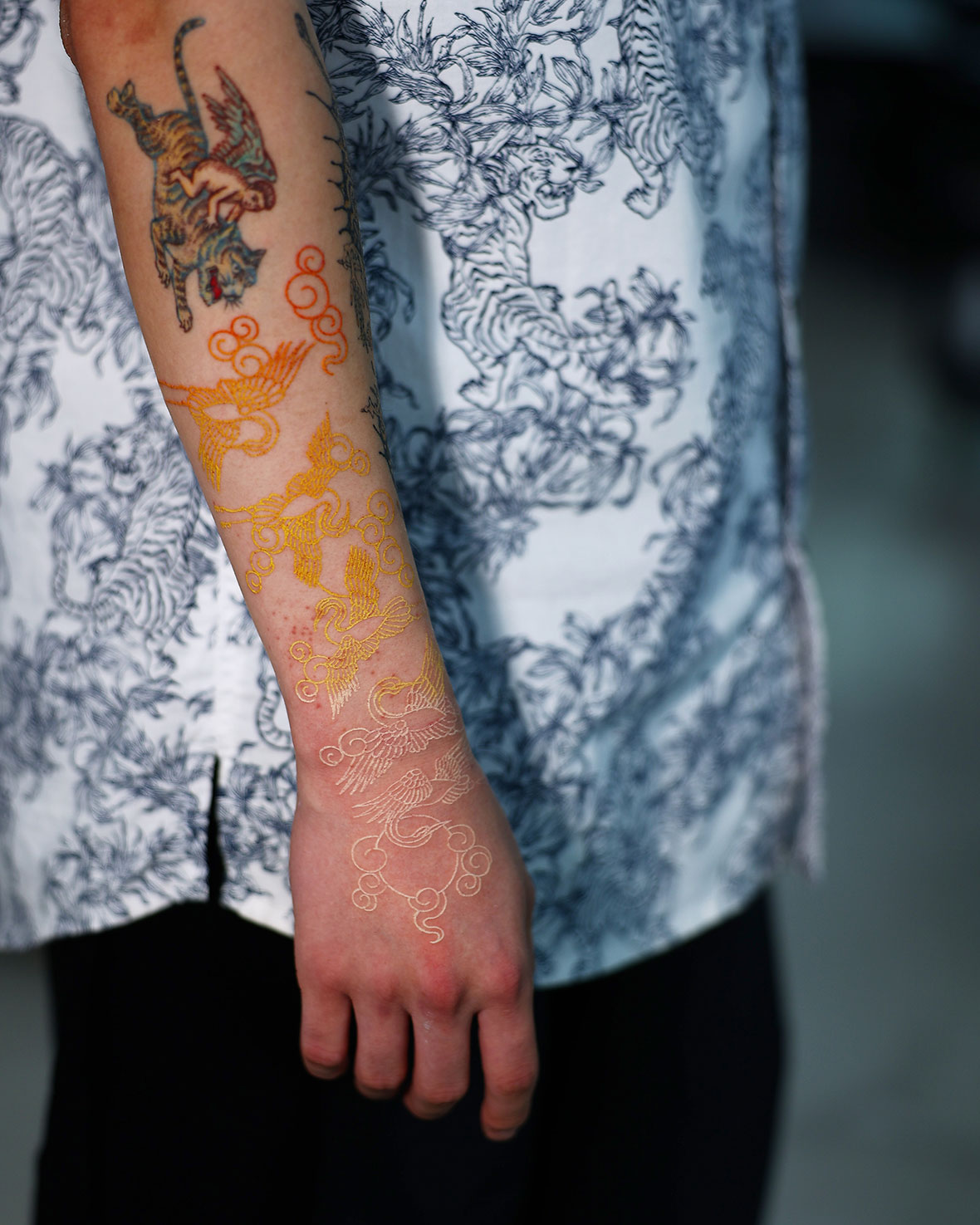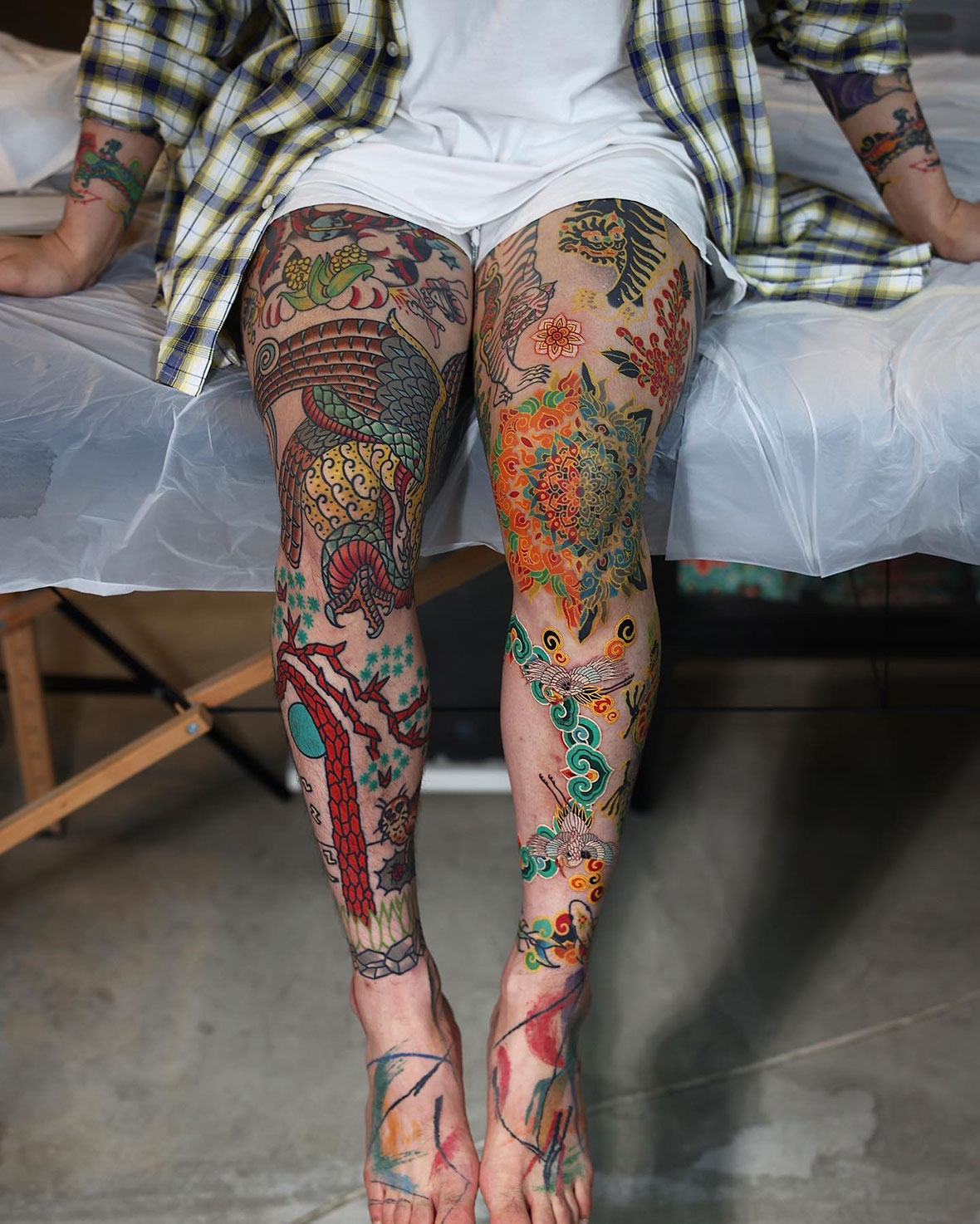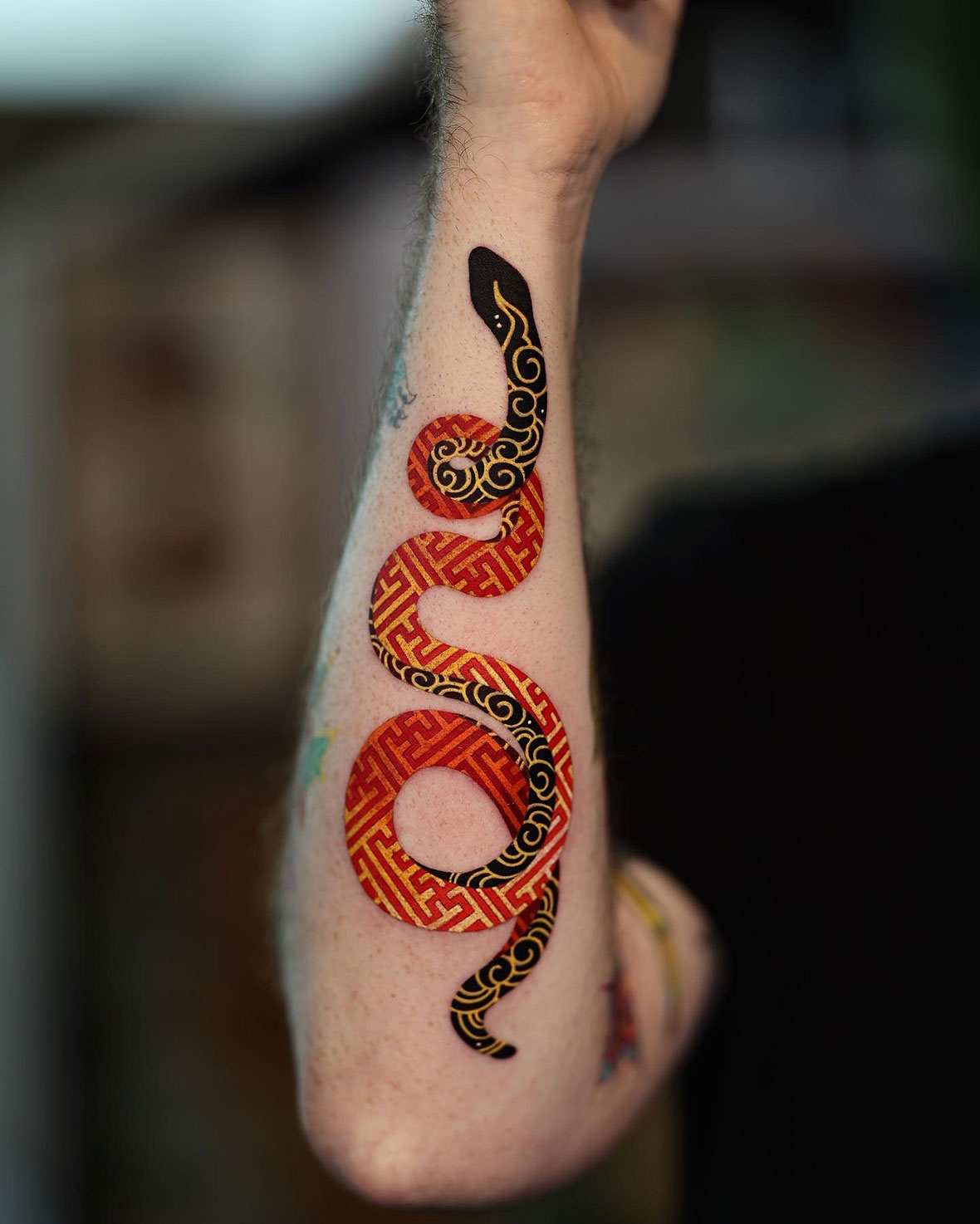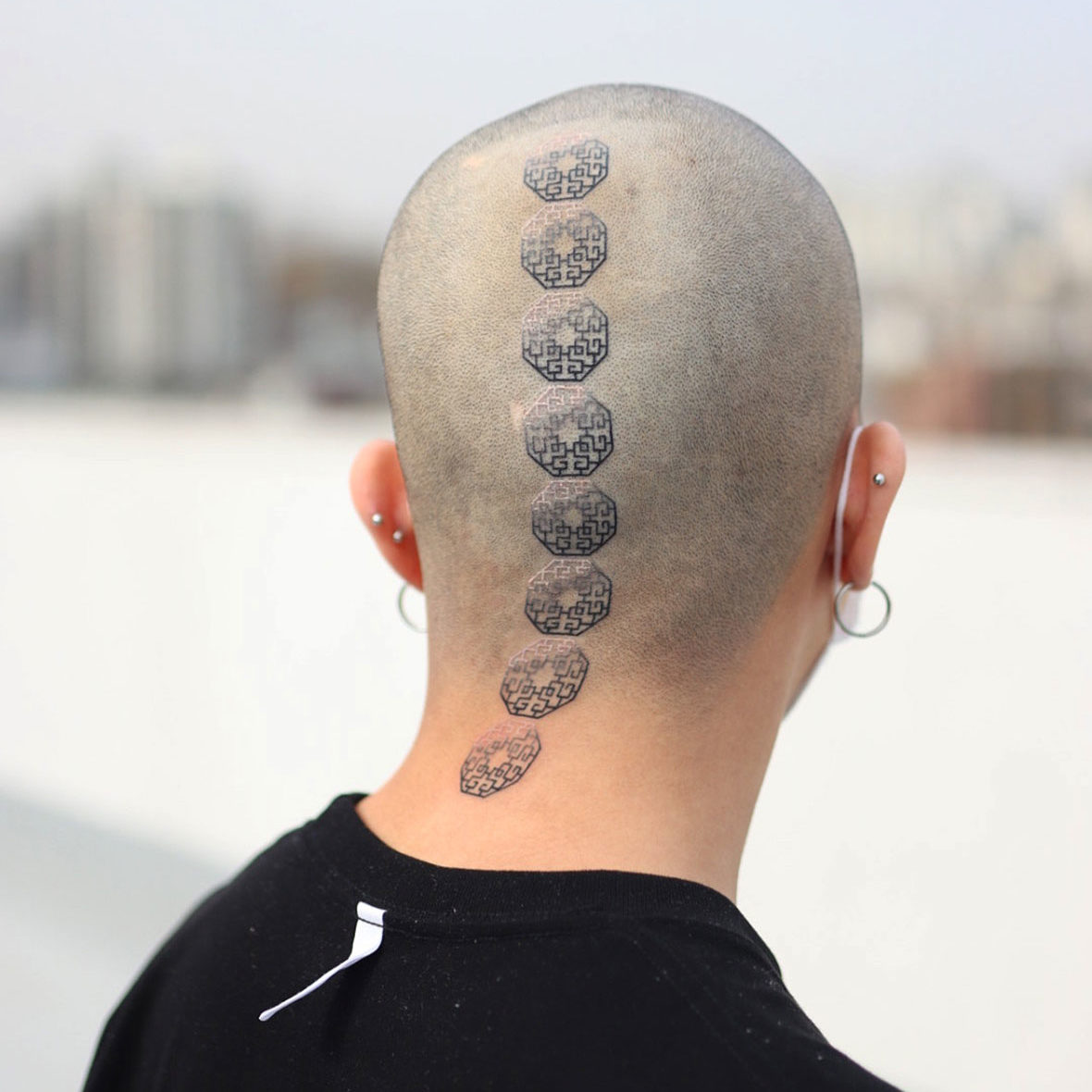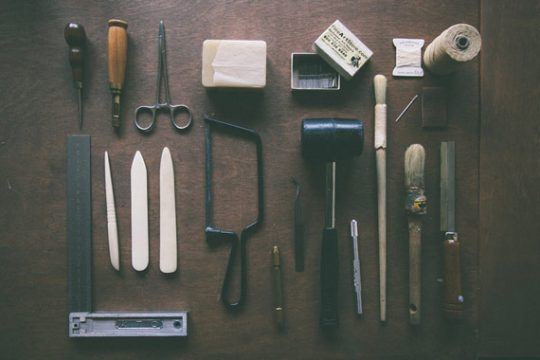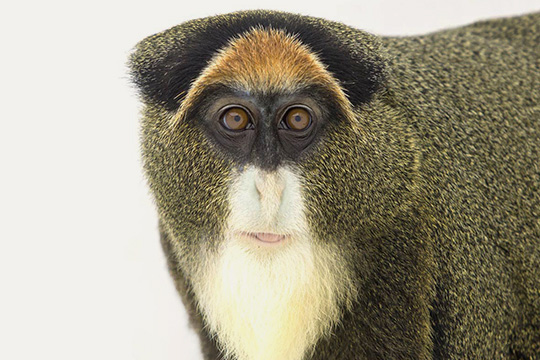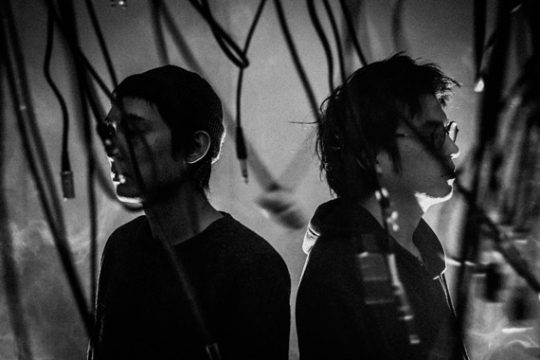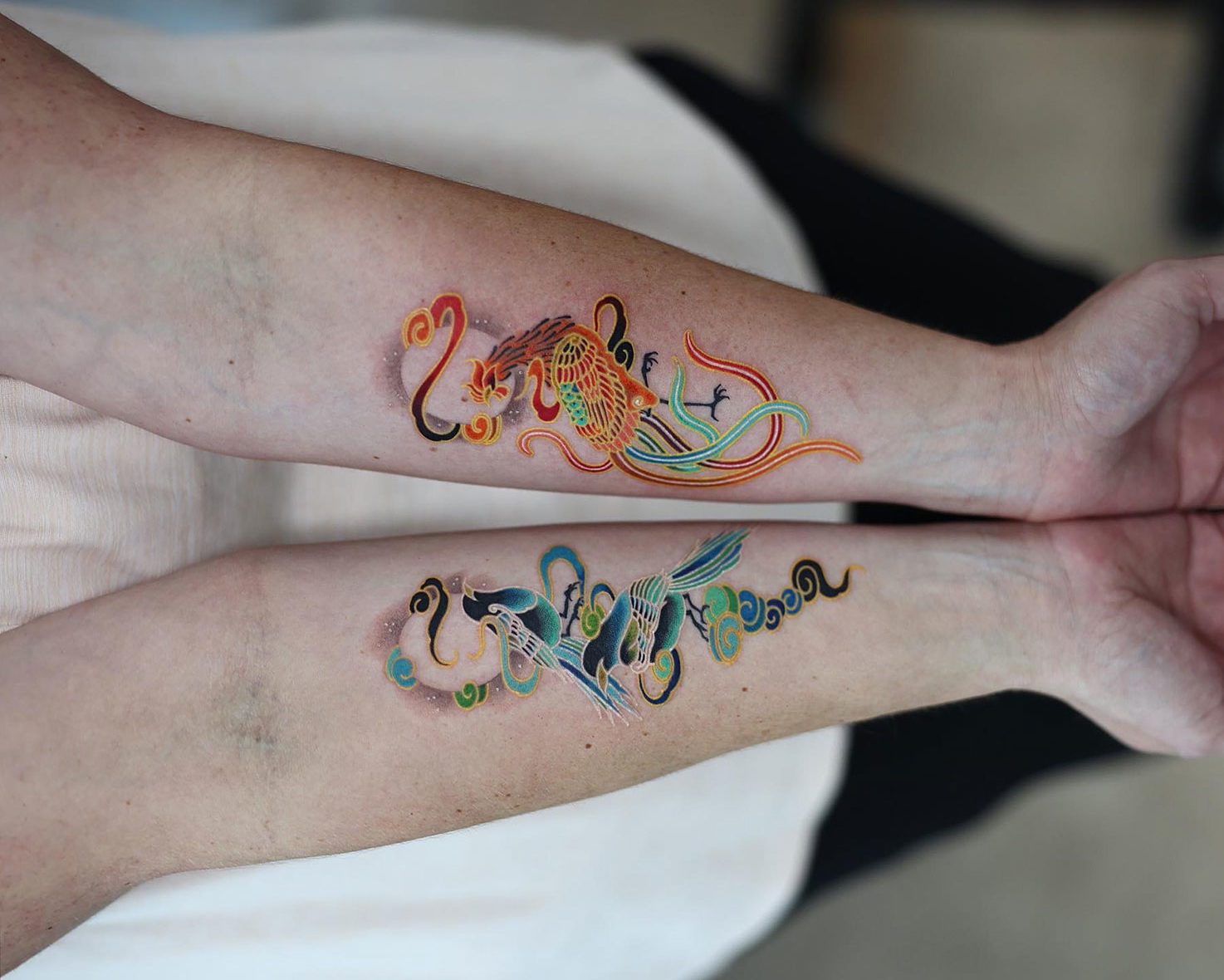
Blooming lotus mandalas, angular lattice patterns, and whirling smoke clouds; snakes, dragons, and demons colored in brilliant tones—this is the work of Seoul-based tattoo artist Jung-hyun Kim, better known at PittaKKM. His art is a contemporary reinterpretation of traditional Korean art styles and Buddhist art, mainly those inspired by temples around his country.
绽放的莲花曼荼罗,棱角分明的篱笆图腾,还有那些穿梭在云雾之间的蛇、龙以及恶魔——这些不同元素共同构成了首尔纹身艺术家 Jung Hyun Kim 的艺术风格。他以当代媒介重新诠释韩国传统和佛教艺术,呈现出别具一格的纹身样式,其灵感大多来自韩国当地的寺庙。
His main influence is dancheong art, which translates to “balance and contrast between vermillion and turquoise.” It’s a decorative painting style used on buildings and artifacts, defined by vibrant colors; maze-like patterns; and bold linework. Its roots stretch as far back as the Goguryeo Kingdom tombs from the start of the common era, but it reached the distinctive identity it’s now known for during the Joseon Dynasty in the late 1600s. The style utilizes the five obangsaek or elemental colors: blue, red, yellow, white, and black, which respectively represent wood, fire, earth, metal, and water.
Traditionally, dancheong is functional and a form of beautification, but it was also symbolic of hierarchy and spirituality. Kim eschews that past and makes a point of avoiding meaning in his work: “I just focus on how it looks, how to make it as beautiful as possible,” he says. “Meanings and viewpoints change, but there are always absolute standards of beauty.”
历史上, 丹青其实也是一种装饰形式,是阶级和精神的象征。不过,Jung Hyun 在创作时刻意避开了这些含义。他解释道:“我只关注视觉上的效果,美观至上。意义和观点会变,但对于美的标准不会。”
About ten years ago, as a senior at an arts high school in Incheon, Kim became fascinated with body modification. After graduating, he began pursuing his love for body mods in the form of tattoos. “I got lots of tattoos by popular artists before making my own,” he recalls. “I loved getting them but also wanted to learn how they do what they do.” Although he enrolled in university for sculpture, he never gave up on tattoos, and now he runs a shop in Seoul with 13 artists called Mizangwon.
大概在十年前,那时的 Jung Hyun 还就读于仁川一所艺术高中,也是从那时开始,他着迷于人体改造,如穿孔和扩耳等等。美术专业毕业后,他想以纹身作为职业,并展开进一步学习。“在开始纹身之前,我找了很多圈内的大咖来帮我纹身,”他回忆道,“出于热爱,我想成为一名出色的纹身师,但首先要懂得学习才行。”现在,他在首尔经营一家纹身店,店的名字叫作 Mizangwon,共聘有 13 位驻店纹身艺术家。
Kim’s style has been relatively the same since he started in 2015, although he’s continuously refining and evolving. Aside from his bold use of colors, the most consistent feature of his style is super clean line work, which did not come naturally to him at first. “My lines were really bad at first, and I struggled a lot to make it happen,” he laughs.
As rewarding as it is to see so much history repurposed through the modern art form of tattoos, Kim infuses his own ingenuity into the style. Through unexpected color schemes, experimentations with contrast, and unique line work, he’s created a style that carries on his culture’s traditions and furthers them for a new generation.
从 2015 年成为一名职业纹身师以来,Jung Hyun 在保持一贯风格的同时,一直不断尝试改进和提升。除了色彩的运用,其作品最一致的特点便是干脆俐落的线条,这是他苦苦练就的成果。他笑着说道:“刚开始那会儿的确很糟糕,但后来我倾尽全力去实现我的目标。”
借鉴传统并将其融入纹身,固然意义非凡。Jung Hyun 也相信自己能凭借努力和一双巧手,来实现充满创造力的融合。无论对于传统文化、还是在纹身圈来讲,他的作品通过出人意料的色彩搭配与实验性的色彩对比,为韩国本土增添了一抹全新的活力。
Like our stories? Follow us on Facebook and Instagram.
Instagram: @pittakkm
Contributor: Mike Steyels
Chinese Translation: Olivia Li

